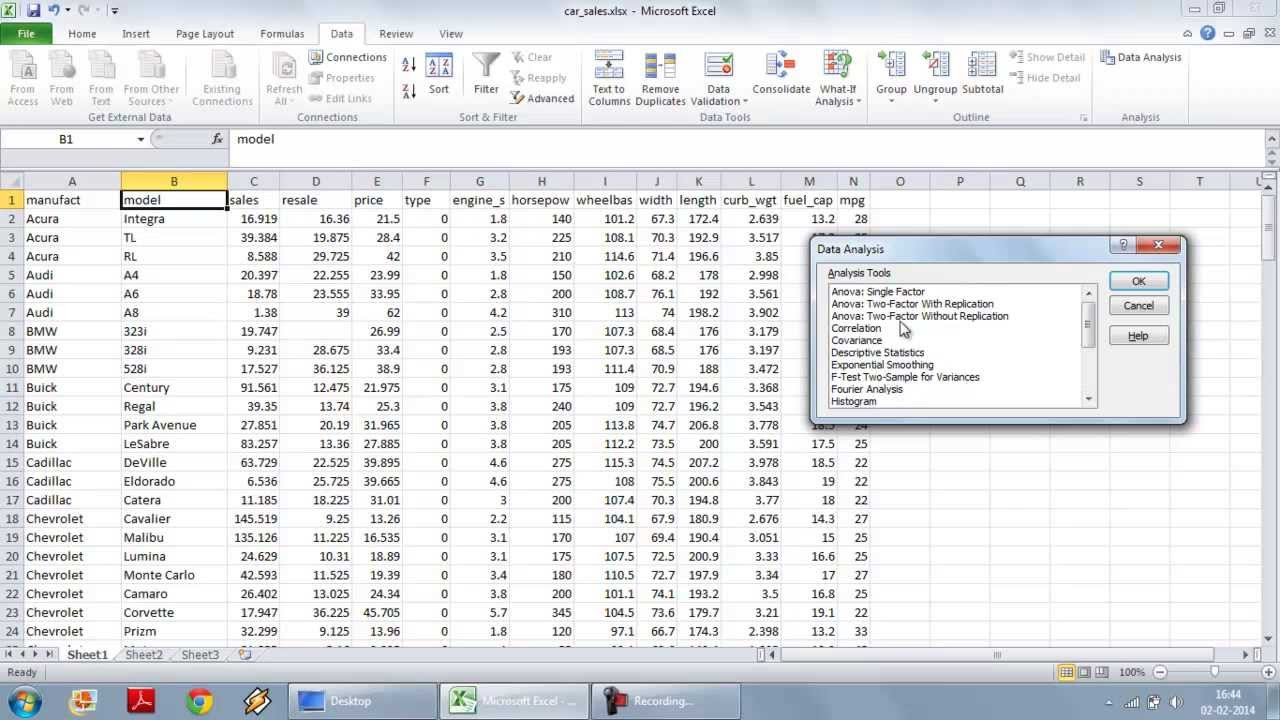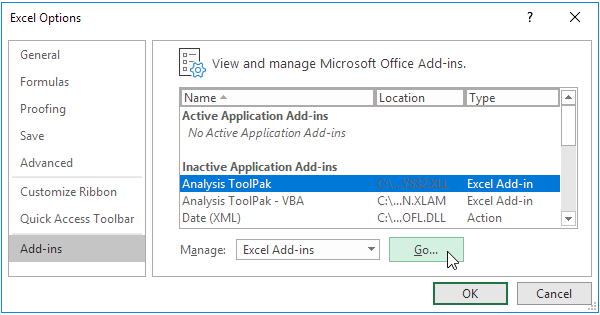

In the Manage box, select Excel Add-ins and. If you want to save hours of research and frustration, try our live Excelchat service! Our Excel Experts are available 24/7 to answer any Excel question you may have. Click the File tab, click Options, and then click the Add-Ins category. Most of the time, the problem you will need to solve will be more complex than a simple application of a formula or function. If it needs to be installed on the computer, click Yes to download and install. Then click Add-Ins Finally, check the box that says Analysis ToolPak then OK The program will then take a few seconds to add this feature to Excel. If the Analysis Toolpak is not available in the list of Add-Ins, click Browse to find it. Excel’s Data Analysis ToolPak for Mac is easy to install: Click the Tools tab at the top of the screen while in Excel. It provides advanced tools such as Anova, Correlation, Covariance, Fourier Analysis. The Analysis Toolpak offers data analysis tools for statistical and engineering analysis. Output: Load the Analysis Toolpak in Mac Note: Excel For Mac Analysis Toolpak Download Piusi Self Service Software Re Loader By Rain Merlin For Mac Golf 2 Gearbox Manual Dell Desktop. Click the Data tab > Data Analysis command to see that the Data Analysis tools are now activated.įigure 5. We have successfully loaded the Analysis Toolpak. In the Add-ins window, select Analysis Toolpak and click OK.When we’re using Excel for Mac, we load the Analysis Toolpak through these steps: When we can’t find the Data Analysis button in the toolbar, we must first load the Analysis Toolpak in Mac. The Data Analysis tools can be accessed in the Data tab. 1, Using the Excel Analysis ToolPak function descriptive statistics.
#Data analysis toolpak excel for mac how to#
This articles assists all levels of Excel users on how to load the Data Analysis Toolpak in Excel Mac. Data ID Sal Compa Mid Age EES SER G Raise Deg Gen1 Gr 1 58 1.017 57 34 85 8 0 5.7 0. It provides advanced tools such as Anova, Correlation, Covariance, Fourier Analysis, Histogram, Regression, t-test and z-test.



 0 kommentar(er)
0 kommentar(er)
